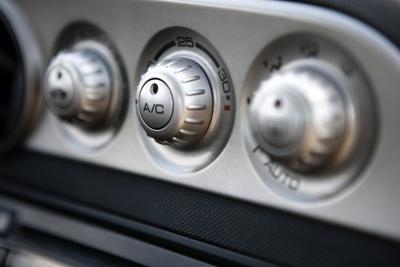
The accumulator, also called a receiver/dryer, in your Chevrolet Astro Van's air-conditioning system is designed to accumulate any liquid and prevent it from entering the compressor. Over time, the accumulator can eventually rust and spring a leak. This leak will allow all of the refrigerant to leak from the air-conditioning system and cause it to no longer cool properly. Fortunately, the accumulator is not a difficult component to replace.
Take your Astro Van to an EPA-certified air-conditioning technician for complete evacuation of any refrigerant in the system.
Open the Astro Van's hood and locate the air-conditioning condenser, a radiator-like component in front of the engine radiator. Trace the thin metal tube from the passenger side of the condenser until you reach a large, aluminum cylinder with a large metal tube attached to it. This is the accumulator.
Using a line wrench, loosen and remove the two lines from the accumulator. Immediately plug the metal lines removed from the accumulator with air-conditioning line plugs.
Loosen and remove the two accumulator retaining screws holding the accumulator in its bracket, using a ratchet and socket, and pull the accumulator from the bracket.
Pour approximately 2 oz. of PAG oil, the air-conditioning system's lubricant, into the new accumulator through the holes that the metal lines connect to. Insert the new O-rings, included with the new accumulator, by hand into the fittings that the metal lines screw into, then place the accumulator in the bracket. Tighten the two retaining screws to hold the accumulator in place, using a ratchet and socket.
Unplug the two metal lines and insert them into the accumulator and tighten the lines using a line wrench.
Take the Astro Van to an EPA-certified air-conditioning technician and have the air-conditioning system recharged with refrigerant.